Saving Money In Costa Rican Restaurants
This post may contain affiliate links.
It s no secret that my absolute favorite thing to do in Costa Rica is eat traditional Costa Rican food – especially in local restaurants.
Living in Costa Rica expanded my culinary tastes beyond belief (can you believe I never really ate vegetables before living there?!?!?) and I now love to eat a lunch casado with picadillo de chayote and a fresh salad. Talk about vegetables!
Since there is literally a restaurant on every corner, it’s easy to find amazing food in Costa Rica. Although the dollar has stayed relatively strong in Costa Rica (about 600 colones to the dollar at the time of writing), we have found that eating out in Costa Rica restaurants can get expensive if we aren’t careful.
In this post, I’ll go over some of the best money-saving tips I have for Costa Rican restaurants. The best tip? Remember- you can drink the water in Costa Rica so you can order tap water!
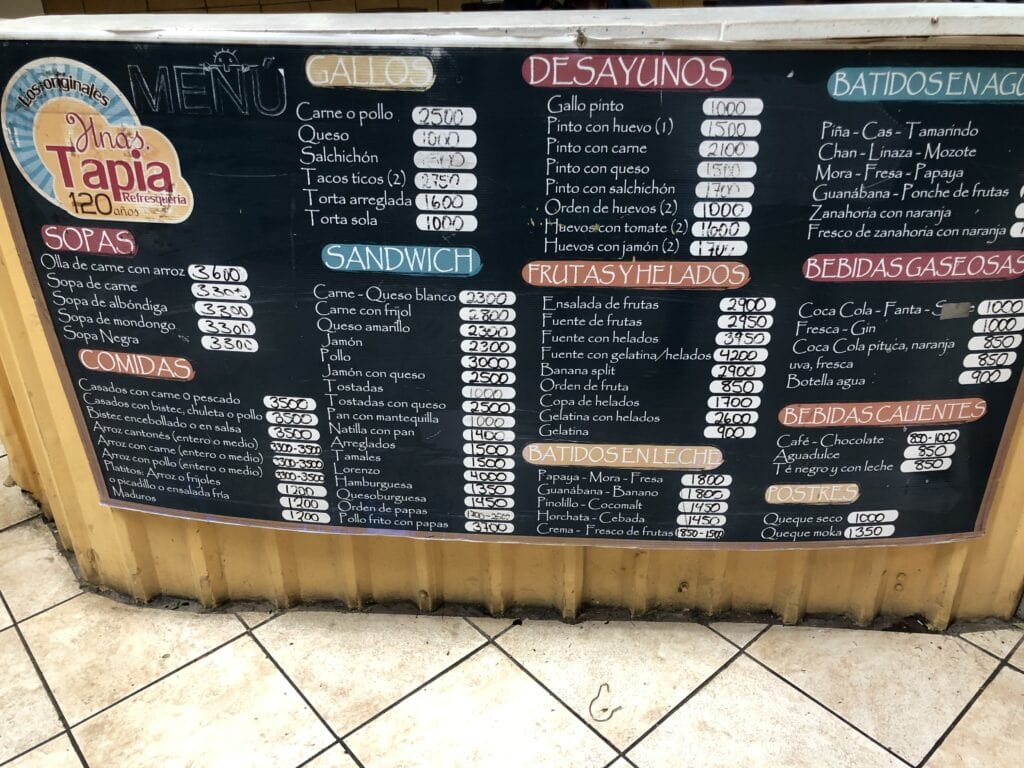
Know The Type of Restaurant
There are really 4 different types of restaurants in Costa Rica, and each has a different price structure. Knowing what you are walking in to will help you save money.
Costa Rican Soda
A “soda” is a small restaurant serving traditional Costa Rican food, and sometimes some fast food items such has hamburgers and fries.
A soda can be of two types- one with a buffet and one with a menu. The soda with the buffet is typically even cheaper than a soda with a menu. Both will offer a “plato ejecutivo” for lunch- it generally includes the casado of the day and a natural juice drink. This will generally cost around $5.
Costa Rican Restaurant
If you see “restaurante” on the sign, you will pay a bit more. Restaurants tend to have a bit more personalized service- a waiter will come and take your drink orders before your food order.
The “restaurant” prices vary widely, and the best way to know how much you are going to spend is to ask for a menu in advance. If the price is in dollars as opposed to colones then you are going to spend more in general.
You can also check the price of arroz con pollo. It’s on every menu, and the price will give you an idea of how expensive the restaurant is. Between $5-10 is a cheaper restaurant, $10-15 is a midrange restaurant and $20 and above would be expensive.
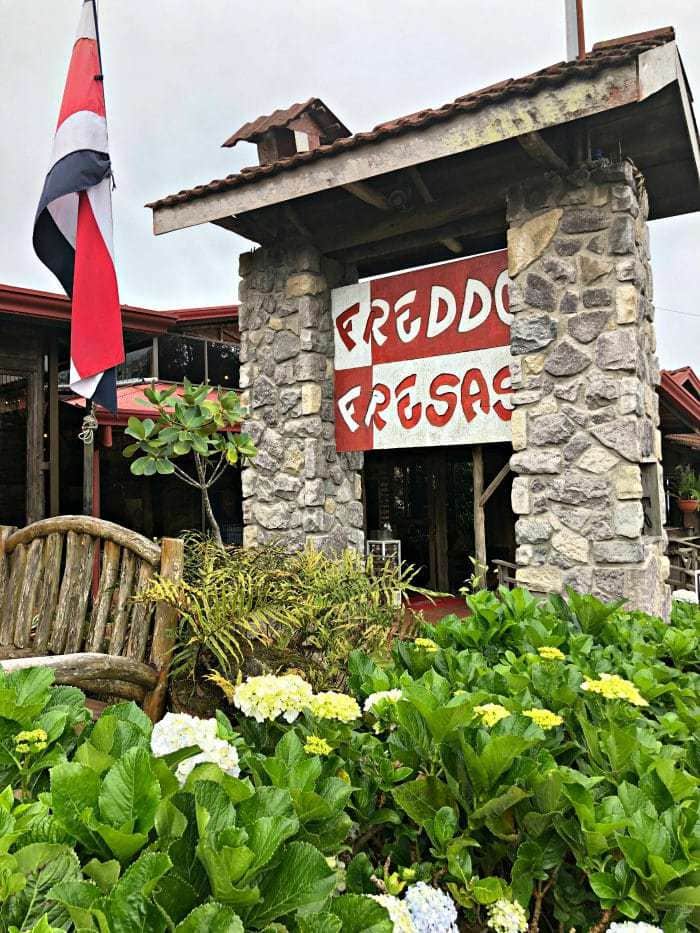
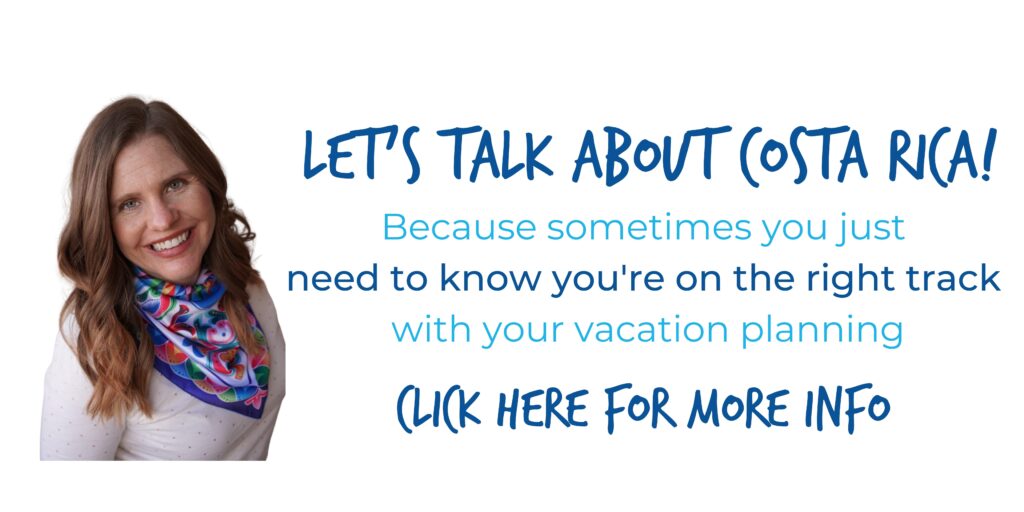
Know The Terminology
You will often find three different types of plates on Costa Rican restaurant menus: boca, plato medio and plato entero.
Boca
A boca is a small plate of food for one person. For example, a boca de chicarrón may contain 1/4 cup of salad, 4 large pork nuggets and 2 pieces of yucca. It’s not uncommon for a hungry person to eat two bocas, and they are a great inexpensive way to try lots of different dishes.
Plato Medio
The plato medio is just a half portion of an entree. (Keep reading).
Plato Entero
A plato entero is the full portion. 9 times out of 10, the plato medio and plato entero are about the same size.
(It’s hilarious to witness two people who have ordered the same dish -one medio and one entero, and then comment for the entire meal about how the plato entero was a rip-off. This happens a lot with the arroz con pollo.)
Special Diet
Most Costa Rican-style food is naturally gluten-free, but make sure you clarify if you have a gluten intolerance. Given the abundance of fresh fruit, vegetables, white rice, and black beans, it’s very easy to be a vegetarian in Costa Rica, and quite simple to make sure you can follow your vegan diet as well.
Costa Rica Menu
Ask for a menu in Spanish. There are two reasons for this: one is that the English translations, while often hilarious, are many times completely unintelligible (chicken gordon? Yep, they meant chicken Cordon Bleu). You might as well wade through the descriptions with your Spanish dictionary.
The second reason is that many restaurants have “tourist menus” with extremely inflated pricing. The local menu will have the correct pricing, and the price gouging will generally stop once you ask for the regular menu.
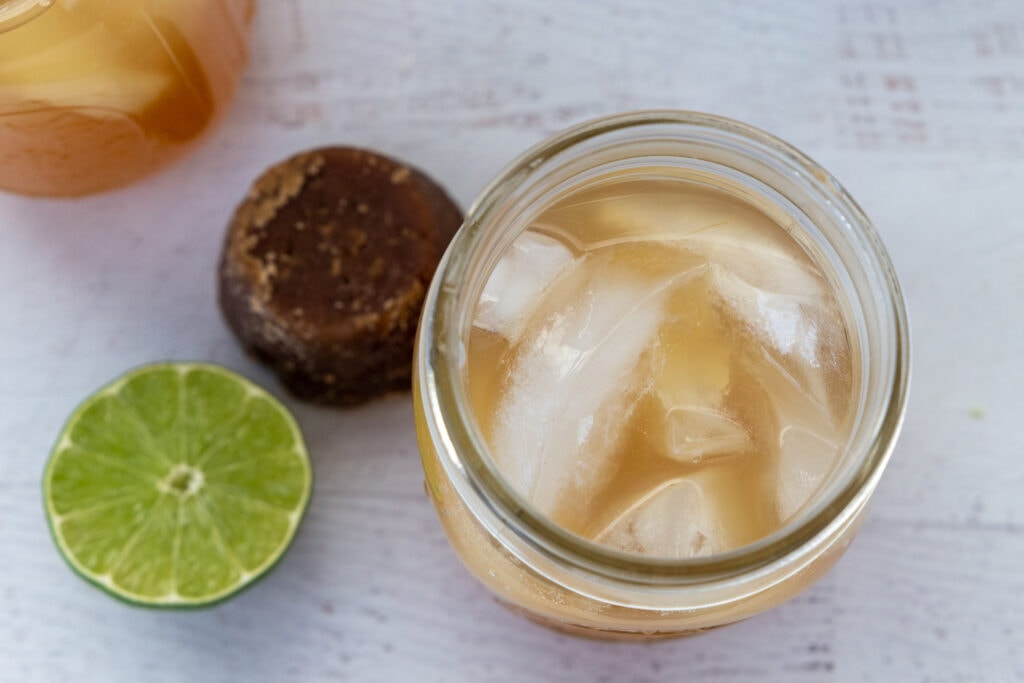
Costa Rican Drinks
Order tap water
After 15 years in Costa Rica, traveling all over, I have never, and I mean never, had problems with the tap water and neither have my kids – that’s because Costa Rica has invested a lot of money in it’s infrastructure, making the water safe.
Bottled water in a restaurant is extremely expensive because locals don’t order it. So skip it, and ask for a vaso de agua del tubo (con hielo) – a glass of tap water (with ice).
(Clarify this, however, because if you order “agua” as a tourist, you will often be brought bottled water).
Forget The Refills
Remember there are no drink refills. It’s common for the drink order to be taken, drinks brought, and then a bit later, the food order taken and then the food brought.
(As a side note, many Costa Ricans don’t drink liquids while eating a meal – just before or after!) Either ask for your drinks to come with the meal, or just order water.
Taxes
Check the menu for “I.V.I.” (impuestos de venta incluidos). This means that the tax and tip are already included in the price listed (tip is a flat 10% gratuity in Costa Rica, regardless of service.)
I.V.I. is generally 18% in Costa Rica, and if this charge isn’t included in the price on the menu, you are looking at an 18% additional charge.
A plate of food that costs 3,500 colones (roughly $7) without IVI listed will actually set you back about 4,200 (roughly $8.40).
Specials
Avoid the specials. I know to do this, and I have still be scammed by a charming waiter who sells me a phenomenal special that then costs $40. (I kid you not!) If you are looking to save money, avoid the daily special, or make sure that you have clarified the price well in advance of ordering. This does not apply to the plato ejecutivo as mentioned before.
How To pay
Pay cash. Costa Rican small businesses and restaurants have begun to pass their credit card bank fees (as high as 8%) on to their customers, and cash is king in Costa Rica. If you have cash, you will avoid this fee, and maybe even get a discount!
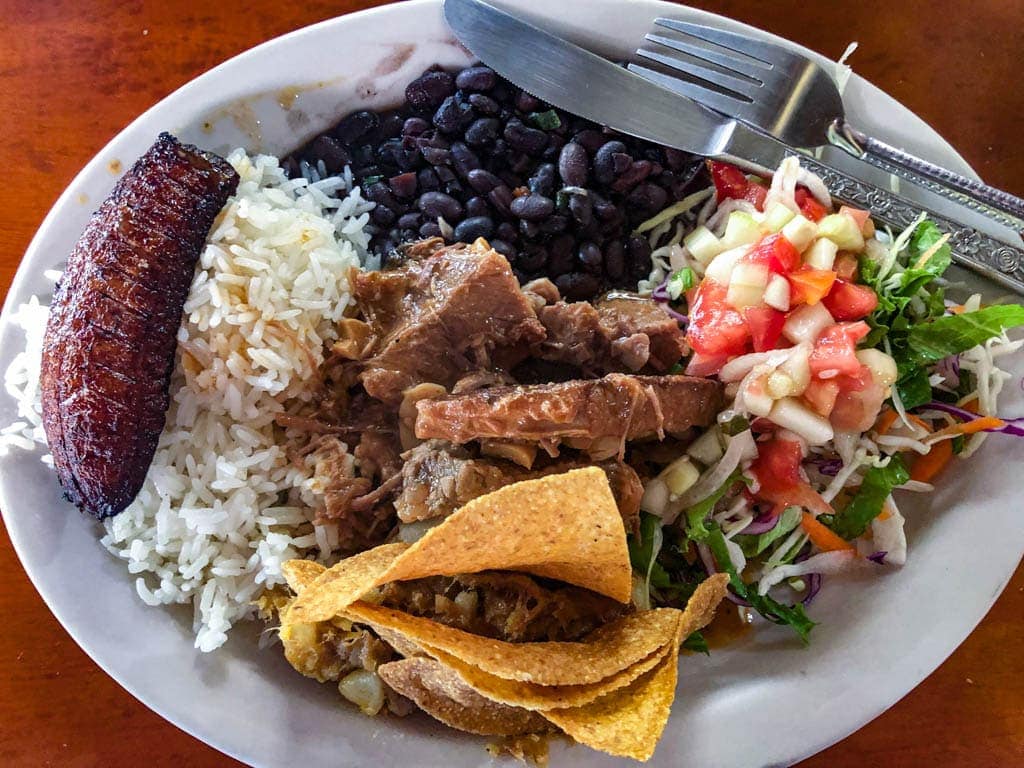
Popular Costa Rican Menu Items
Want to know what the best food is to order? Whether it’s a Costa Rican Breakfast, a lunch casado, or a fun happy hour appetizer, these are the best items to order on the menu. Also- since drinking the water isn’t an issue, Costa Rican street food generally isn’t either, so make sure to try some!
- Arroz con pollo
- Arroz con camaron
- Gallo Pinto
- Casado
- Caribbean Rice and Beans
- Chifrijo
- Tacos
- Nachos
- Sweet Fried Plantain
- A fun cocktail!
Best Costa Rican Restaurants
Here are some of the lists of our favorite Costa Rican restaurants:
If you are looking for extra help and tip tips to make your Costa Rican vacation seamless, I’m happy to talk to you. Book a phone call or a video chat here and I’ll get you sorted! You can also visit our Costa Rican trip planning guide here.
Join me over at my favorite place- Instagram.

Christa Jimenez
Welcome! I’m Christa, a Spanish teacher married to a handsome Costa Rican and mother of two bilingual daughters. We’ve spent over 25 years living in and traveling to Costa Rica with our daughters, and this website is my love letter to all things Costa Rica- and to bilingual parenting too. You can read my full story here. Thanks for stopping by!


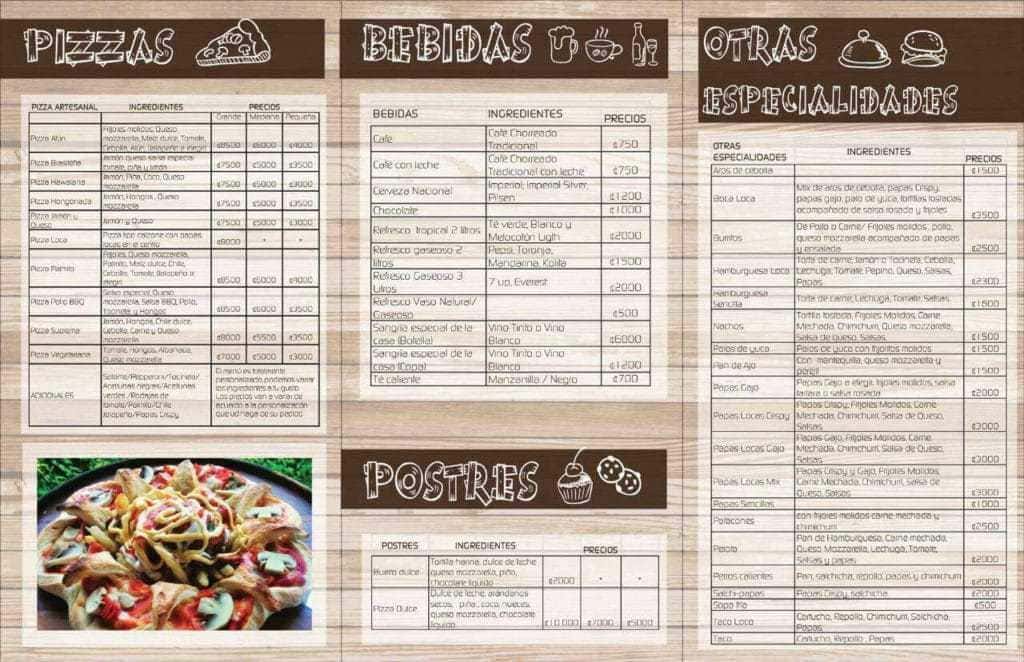

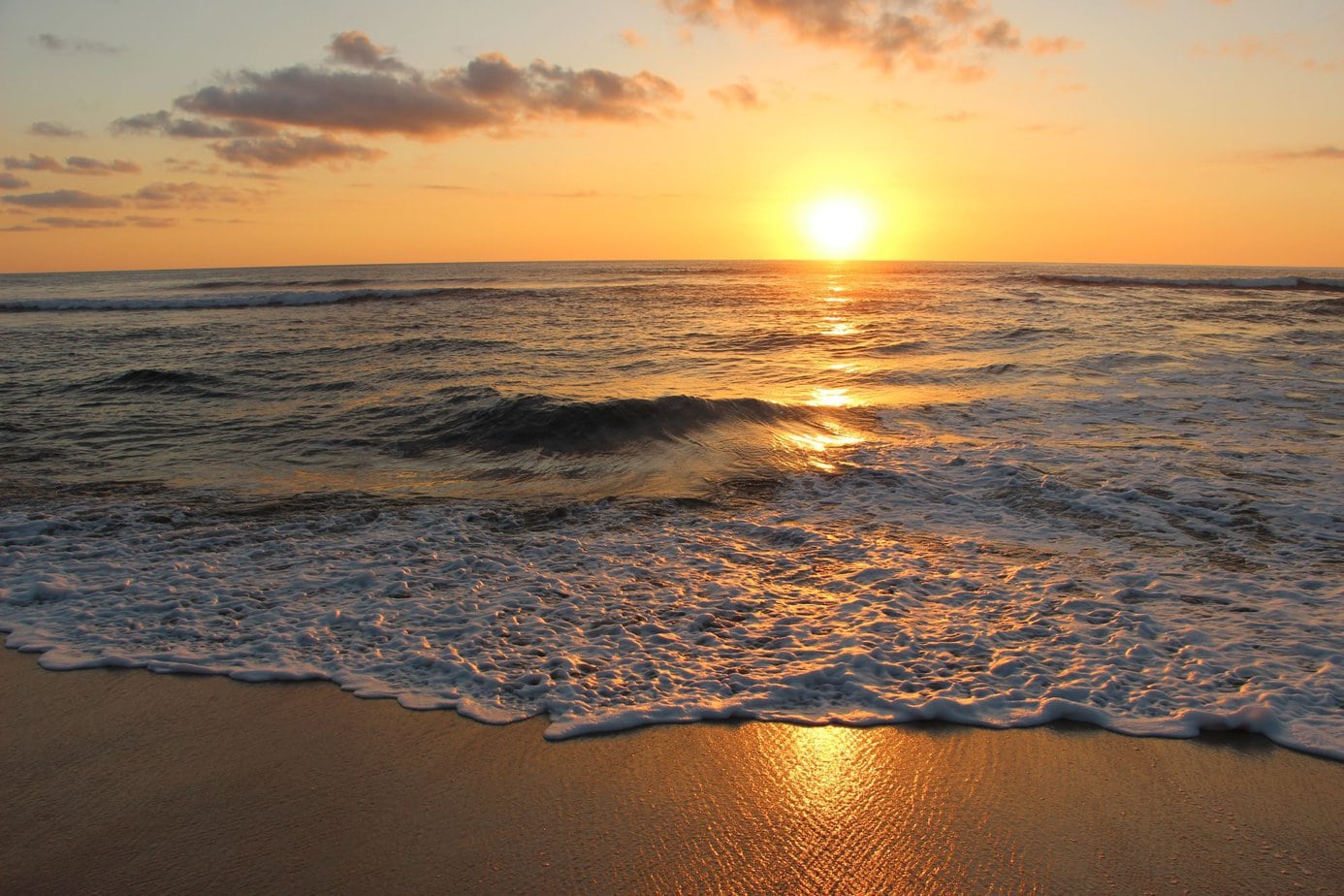
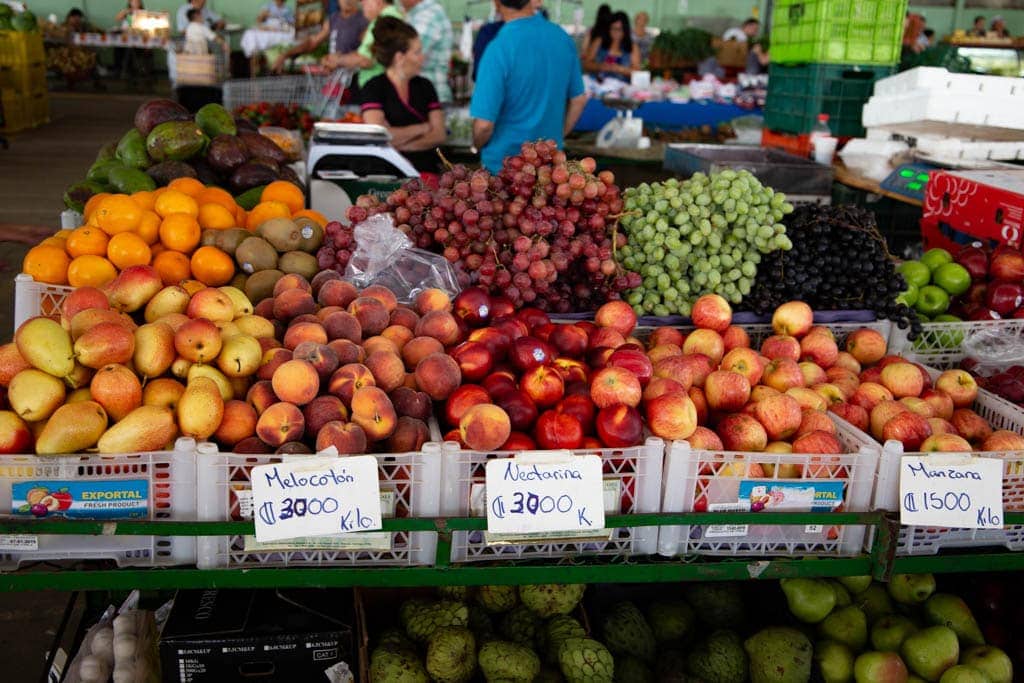
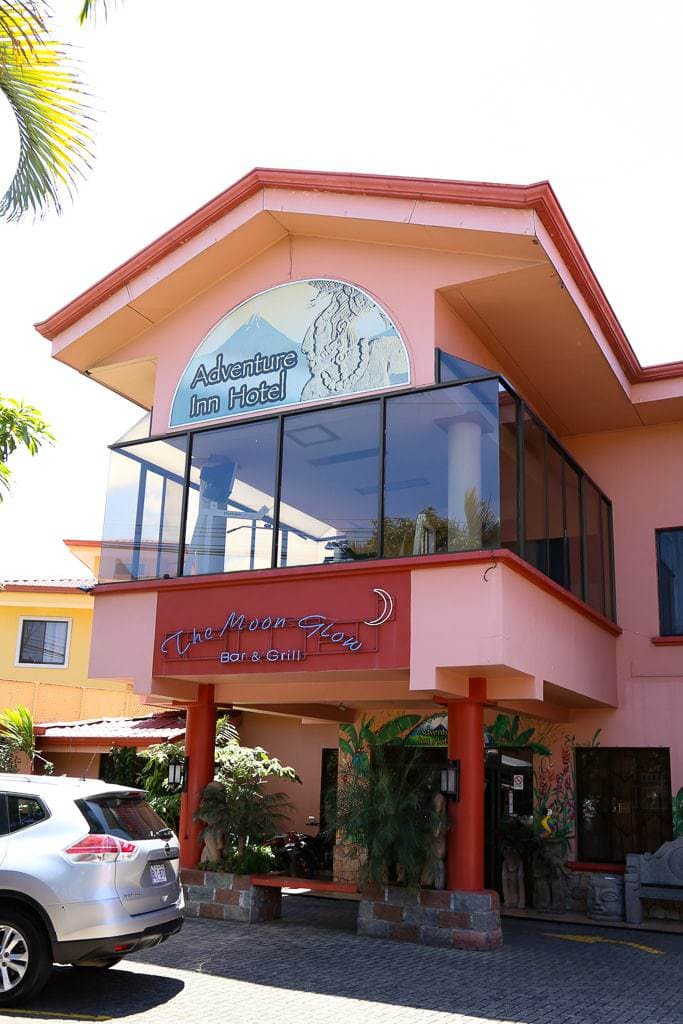
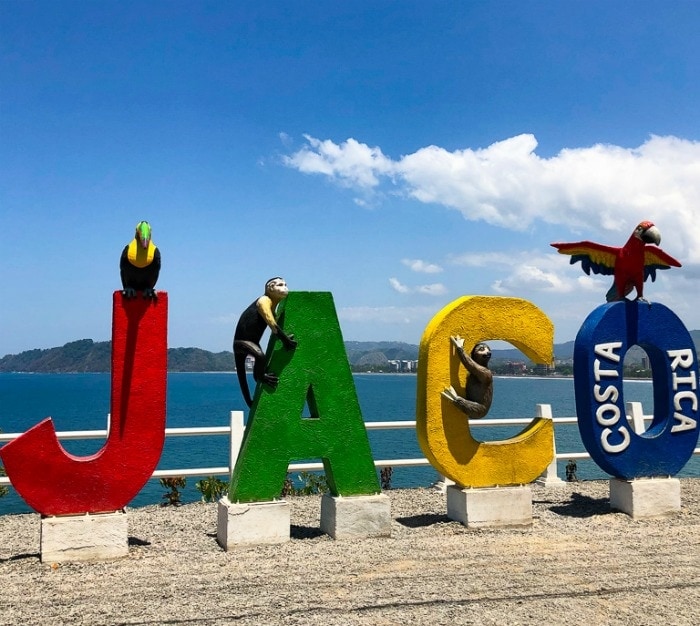
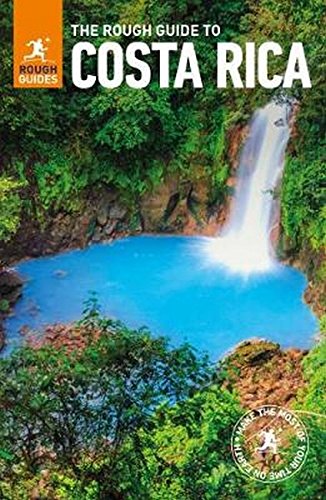
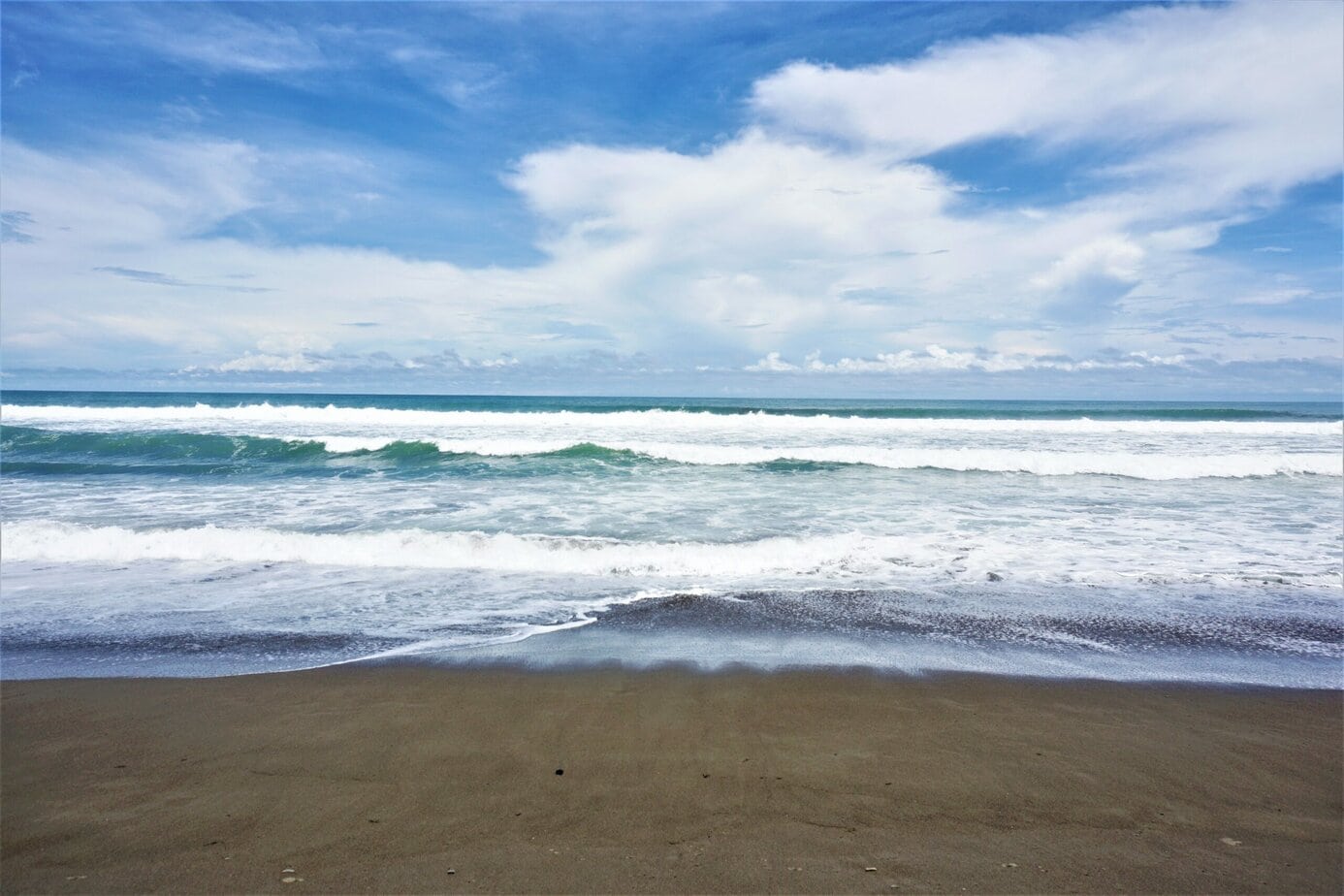
You are so right about taking cash! We never had a problem in San Jose, but at the beach it made a big difference. We made the mistake of traveling with very little cash to the beach years ago, not realizing how hard it would be to find an ATM. In the meanwhile we were stuck eating at the tourist-y restaurants, which were so much more expensive and tended to have more Americanized food. It was such a relief to finally get some cash so we could go to the wonderful little places that were so much cheaper and had amazing food!
Leanna, that is just so true. In beach areas there aren’t a ton of ATMs, and when there are, they seem to be Banco Nacional. Great bank, but their ATMs are not very friendly to foreign cards. I remember one night going to a bar and spending all night chatting with friends. At the end of the night, we were advised that no credit cards were taken. After trying 5 ATMS with no cash, our friends paid for our tab that night but we were super embarrassed… and learned our lesson. Cash is king!! Thanks so much for commenting! ~Christa
Costa Rican cuisine is probably my favorite in all the world!!
Kali- have you ever been to Costa Rica? ~Christa
Thank you for all the important insights you have given me . In less than 8 hours I will be in Costa Rica with the knowledge that will truly help my family
THANK YOU! This comment makes my day!